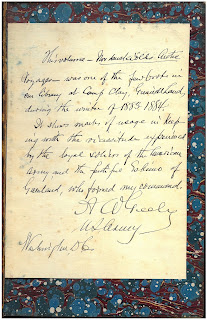 We don't have much to say about this item, except we can't believe how pretty it is. It has been kicking around in the collections for a long time in our uncataloged realia collection. We have been sorting through boxes of stuff this past year to see what treasures might be hidden away. Mainly we are finding things that people once thought were really important relics, but that have since become a little less than inspiring. We are also we are finding some gems and cataloging them.
We don't have much to say about this item, except we can't believe how pretty it is. It has been kicking around in the collections for a long time in our uncataloged realia collection. We have been sorting through boxes of stuff this past year to see what treasures might be hidden away. Mainly we are finding things that people once thought were really important relics, but that have since become a little less than inspiring. We are also we are finding some gems and cataloging them. Definitely jumping up toward the top of the list of awesome finds, is this herbarium of plants from Syria lovingly assembled by William Bird, a missionary from the Class of 1844. He had a decorative flair and wasn't afraid to make a statement with his samples.
Definitely jumping up toward the top of the list of awesome finds, is this herbarium of plants from Syria lovingly assembled by William Bird, a missionary from the Class of 1844. He had a decorative flair and wasn't afraid to make a statement with his samples.It is cataloged and on the shelf now, so you can see it by asking for Codex MS 003273. It is well worth your time.


